#medicaldocumentation
Explore tagged Tumblr posts
Text
JUMBLR please help me make my best friend's year! She is a recently diagnosed autistic Jew and I am asking for tzedakah so that she can afford a task trained service dog!
This is her post from social media that she said I could share:
"My #primarycareprovider #primarycaredoctor is ON BOARD with me getting a #servicedog ! I am so relieved, one less step to worry about.
"Now that I have #medicaldocumentation settled I just need to #fundraise some more money to apply with @Susquehanna Service Dogs.
"Please help me reach my #fundraisinggoal by donating or sharing."
GoFundMe: https://gofund.me/b66967c7
#fundraiser #fundraising #fundraiserhelp #fundraisertime #fundraiserinbio #sdfundraiser #autistic #actuallyautistic #assistancedog #medicaldocumentation #autism #fundraising #tasklist #workingdog #workingdogs #workingdogsoftiktok #workingdogsofinstagram #servicedoglife #servicedogsoftiktok #servicedogteam #servicedogs #assistancedogsoftiktok #assistancedogs #assistancedoglife
Venmo: @purplehorse
Cashapp: $dragonsteeth2415
#fundraiser#fundraising#fundraiserhelp#fundraisertime#fundraiserinbio#sdfundraiser#autistic#actuallyautistic#assistancedog#medicaldocumentation#autism#tasklist#workingdog#workingdogs#workingdogsoftiktok#workingdogsofinstagram#servicedoglife#servicedogsoftiktok#servicedogteam#servicedogs#assistancedogsoftiktok#assistancedogs#assistancedoglife#tzedakah#mutual aid#mutualaid#jumblr
25 notes
·
View notes
Text
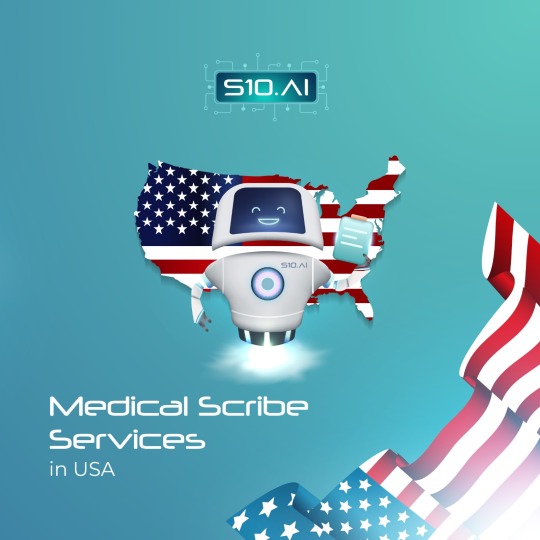
Discover top-notch Medical Scribe services in the USA, ensuring accurate and efficient documentation for healthcare professionals. Elevate your practice with expert scribing, enhancing productivity and precision in patient care.
https://s10.ai/blog/medical-scribe-in-usa
#medicalscribe#medicalscribing#medicaldocumentation#virtualscribe#virtualassistant#clinicaldocumentation#S10#S10AI#AIscribe#technology
1 note
·
View note
Text
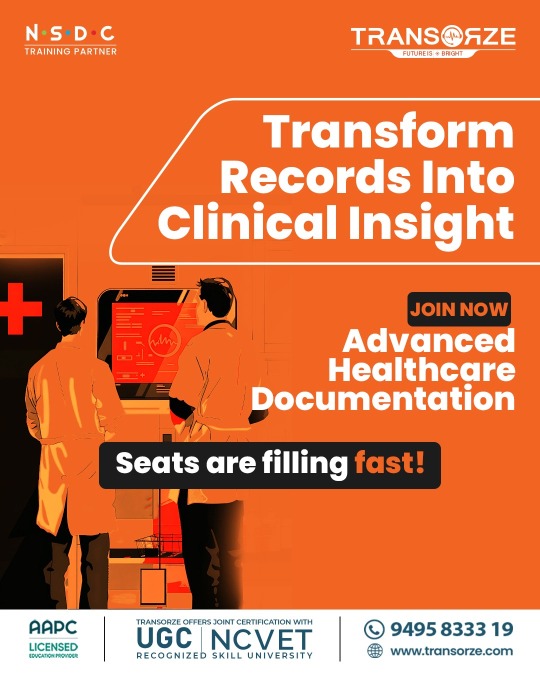
Learn best with the International Diploma in Advanced Healthcare Documentation, designed to help you grow in the evolving global healthcare industry. This diploma boosts your career potential with opportunities in hospitals, telehealth, and remote healthcare roles. It’s the ideal step for those seeking stability, flexibility, and international recognition in a high-demand field.
#transorze#healthcarecareer#healthcarejobs#careerinhealthcare#healthcaretraining#AdvancedHealthcareDocumentation#InternationalDiploma#HealthcareCareers#HealthcareSupport#MedicalDocumentation#DiplomaInHealthcare
0 notes
Text
RHIT Question of the Day
🩺 A family practitioner requests the opinion of a physician specialist who reviews the patient’s health record and examines the patient. In what type of report would the specialist record findings, impressions, and recommendations?
Options: a) Consultation b) Medical history c) Physical examination d) Progress notes

Answer: a) Consultation
💡 Why? A consultation report is created when a specialist is asked to evaluate a patient and provide expert input. It includes their findings, clinical impressions, and recommendations based on the health record review and personal examination.
Medical history focuses on the patient’s background.
Physical examination documents objective findings from the provider's exam.
Progress notes track ongoing updates during treatment by the primary provider.
#RHIT#HealthInformation#MedicalDocumentation#ConsultationReport#HIM#HealthRecords#HealthIT#MedicalCoding#CodingChallenge#PatientCare
0 notes
Text
Remote Medical Scribes from vmedxeasy
Boost productivity and reduce physician burnout with Remote Medical Scribes from vmedxeasy. Our expert scribes handle documentation in real-time, allowing providers to focus more on patient care. Experience seamless, accurate, and secure support today.
#RemoteMedicalScribes#MedicalScribing#HealthcareProfessionals#Telehealth#MedicalDocumentation#DigitalHealthcare#HealthTech#RemoteWork#JobOpportunities#MedScribe#VirtualAssistance#PatientCare#HealthcareHeroes#ClinicalDocumentation#ScribeLife#MedTech#HealthcareRemoteJobs#Telemedicine#RemoteJobs
0 notes
Text


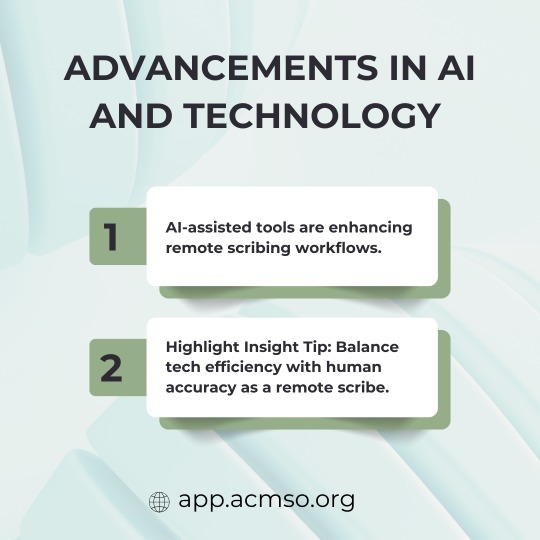







🚀 The Future of Remote Scribing in Healthcare! 🏥💻
The rise of telemedicine has skyrocketed demand for remote medical scribes, creating new career opportunities worldwide. 🌍 With AI-assisted tools improving documentation workflows, scribes must balance tech efficiency with human accuracy.
🔹 Why Remote Scribing? ✅ Flexible work-from-home careers 🏡 ✅ Support healthcare providers globally 🌎 ✅ Master EHR systems & virtual communication 📊
While challenges like communication gaps exist, specialized training helps overcome them. ACMSO offers top-tier programs to build skills for the future of remote scribing! 🎓
🌐 Visit: app.acmso.org
🔗 Follow @acmsomed for expert guidance and career insights!
🌐 Visit: app.acmso.org
#medicalscribe#remotescribing#telehealthcareers#EHR#aiinhealthcare#medicaltranscription#scribetraining#healthcaretechnology#medicalcareer#scribelife#workfromhomemom#virtualscribe#medicaldocumentation#healthcareinnovation#medicalbilling#scribecertification#hipaacompliance#healthtech#telemedicine#clinicaldocumentation#healthcarejobs#MedicalRemoteWork#futureofmedicine#medicalscribes#ACMSO#careergrowth
0 notes
Text
What Can Delay MRI Prior Authorization Approval?
Prior authorization services for MRI is a critical step in ensuring that imaging studies are medically necessary and covered by insurance. However, delays in obtaining approval can lead to treatment postponements, increased patient anxiety, and workflow disruptions for healthcare providers. Several factors contribute to these delays, ranging from documentation issues to insurance company policies.
1. Incomplete or Incorrect Documentation
One of the most common reasons for MRI prior authorization delays is incomplete or incorrect documentation. Insurance providers require specific clinical details, including patient history, previous treatments, and medical necessity justifications. Missing or inaccurate information can lead to immediate denials or requests for additional documentation, prolonging the approval process.
2. Lack of Medical Necessity Justification
Insurance companies assess whether the requested MRI is medically necessary based on established guidelines. If the request lacks strong justification, such as failure to demonstrate failed conservative treatments, absence of significant clinical symptoms, or missing physician notes, the insurer may delay or deny authorization.
3. Insurance Policy Restrictions and Pre-Determined Criteria
Each insurance company has its own set of guidelines for approving MRI scans. Some policies require patients to first try alternative diagnostic methods, such as X-rays or CT scans, before approving an MRI. Additionally, certain plans may restrict MRI approvals for specific conditions, requiring extensive justification from the provider.
4. Delays in Communication Between Providers and Insurers
Healthcare providers must submit MRI authorization requests through insurance portals, fax, or phone calls. Any miscommunication or failure to respond promptly to insurer requests for additional information can significantly delay the process. Some providers may also experience challenges in reaching the right department or navigating insurer-specific submission procedures.
5. Insurer Backlog and Processing Delays
Insurance companies often face high volumes of prior authorization requests, leading to processing delays. If an insurer has a backlog of cases, approval times can extend beyond the standard timeframe, sometimes taking weeks. This can be particularly problematic for urgent MRI requests.
6. Requirement for Peer-to-Peer Review
In cases where an MRI request is initially denied, some insurers require a peer-to-peer review, where the requesting physician discusses the case with an insurance medical director. Scheduling and completing these reviews can take time, further delaying approval.
7. Errors in CPT Codes or Procedure Details
Using incorrect Current Procedural Terminology (CPT) codes or mismatching procedure details with the diagnosis can result in claim rejections. Ensuring accuracy in medical coding and aligning the request with the insurer’s policies can help prevent unnecessary delays.
8. Patient Eligibility and Coverage Issues
If a patient’s insurance coverage is inactive, out-of-network, or does not include MRI benefits, the prior authorization process can be stalled. Verifying patient eligibility before submitting the request helps prevent these delays.
Conclusion
Delays in MRI prior authorization approval can be frustrating for both patients and providers. By ensuring complete documentation, verifying insurance requirements, and maintaining clear communication with insurers, healthcare professionals can minimize approval delays and streamline the process.
#MRIApprovalDelays#PriorAuthorization#MedicalNecessity#InsuranceDelays#HealthcareBilling#MRIRequest#PreAuthorizationIssues#InsuranceApproval#MedicalBilling#RCMChallenges#ProviderPayerDelays#ClaimDenials#MedicalDocumentation#HealthcareDelays#CPTCodeErrors#PeerToPeerReview#PatientEligibility#InsuranceBacklog#CodingAccuracy#DiagnosticImaging
0 notes
Text
The Best Things About HMS Software | A Comprehensive Overview
Hospitals play a critical role in healthcare systems, delivering essential services to communities. However, managing a hospital involves the coordination of numerous departments, from patient care to administration, making it a complex task. Without the right tools, this can quickly become overwhelming. This is where hospital management software (HMS) proves invaluable, simplifying operations and enhancing productivity.
Grapes IDMR, developed by Grapes Innovative Solutions, is an advanced hospital management solution that offers a comprehensive platform to streamline hospital operations. With features like patient admission management, appointment scheduling, clinical documentation, inventory management, and billing solutions, Grapes IDMR enables healthcare providers to manage various aspects of hospital administration with ease. This all-in-one software improves efficiency, reduces errors, and enhances overall patient care, making it an essential tool for modern healthcare facilities.
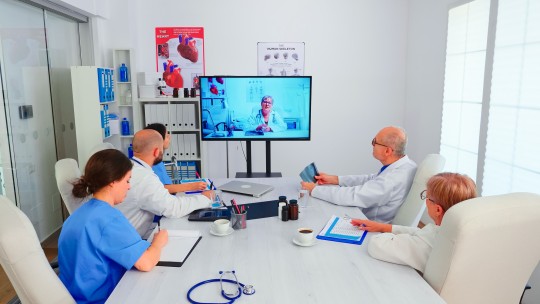
How HMS Software Revolutionizes Hospital Operations
HMS software is a transformative tool for modern hospitals, providing seamless integration of all administrative and clinical processes. Hospitals deal with numerous challenges such as patient scheduling, billing, inventory management, and clinical documentation. A well-implemented HMS software can make all of this simpler and more efficient.
With Grapes IDMR, hospitals can:
Enhance Patient Management:Effective patient management is the heart of any healthcare facility. HMS software enables doctors and administrators to track patient history, test results, treatment plans, and appointments easily. This not only improves patient care but also boosts operational efficiency.
Automate Billing and Payments:Managing medical billing and insurance claims can be a complex task. Grapes IDMR automates billing processes, reducing errors and ensuring accurate invoicing. This system also integrates with insurance companies to streamline claims processing, making it easier for patients and administrators.
Improve Inventory Management:Managing medical supplies and equipment is critical in a hospital environment. HMS software helps hospitals maintain an organized inventory, track supplies in real-time, and automate reorder levels. This ensures that there is always enough stock to meet patient needs.
Data Security and Compliance:With healthcare data being highly sensitive, maintaining security and compliance with regulatory standards is essential. Grapes IDMR ensures that all data is securely stored and follows local and international regulations, safeguarding patient privacy.
Simplified Reporting and Analytics:The software provides detailed reports and analytics to assist administrators in making data-driven decisions. From patient satisfaction to operational efficiency, Grapes IDMR gives insights that help improve service delivery.
How HMS Software Improves Healthcare Management
Grapes IDMR offers several solutions designed to improve the efficiency and management of healthcare facilities, allowing hospitals to focus more on patient care while streamlining operations:
Patient Admission Management:With Grapes IDMR, the patient admission process is streamlined by automating the entry of patient details. This not only reduces patient wait times but also ensures that accurate records are maintained, making the entire process faster and more efficient. Hospitals can easily manage patient data, eliminating the need for manual entries, and minimizing the chances of errors during the admission process.
Appointment Scheduling:The system makes appointment scheduling simple and efficient. Patients can schedule their appointments directly through the software, and doctors can access real-time scheduling information. This eliminates appointment conflicts, allowing doctors to optimize their time and better manage patient flow. The result is improved patient satisfaction, reduced wait times, and better planning of patient care.
Clinical Documentation:Grapes IDMR offers an intuitive interface for doctors to document patient information, treatment plans, and progress notes. This digital documentation eliminates the need for physical paperwork, reducing the risk of lost records or human error. With easy access to up-to-date patient information, healthcare providers can make more informed decisions, ultimately improving patient care and treatment outcomes.
Inventory Management:Grapes IDMR automates the tracking of hospital inventory, ensuring that essential supplies are always in stock. By monitoring inventory levels in real-time and generating alerts when stock is low, hospitals can avoid shortages and waste. The system helps in maintaining optimal stock levels, ensuring that critical items are always available without unnecessary overstocking, contributing to both cost savings and operational efficiency.
Mobile Integration:Healthcare professionals can access Grapes IDMR from mobile devices, enabling them to retrieve patient data, schedules, and other critical information on the go. This feature facilitates faster decision-making, especially in urgent or remote situations. It provides healthcare workers with the flexibility to access necessary data from anywhere, improving response times and patient care delivery, regardless of the professional’s location.
Billing and Payment Solutions:Grapes IDMR simplifies the billing process, allowing for seamless generation of invoices and the tracking of payments and receipts. The system minimizes the chances of billing errors and delays, ensuring that patients receive accurate billing information. Healthcare facilities benefit from more efficient financial management, quicker payment processing, and enhanced transparency in their billing processes.
By integrating these features into hospital operations, Grapes IDMR helps healthcare facilities improve their overall efficiency, enhance patient care, and streamline administrative tasks. Whether it’s simplifying patient admissions, managing appointments, or securing sensitive data, Grapes IDMR is an invaluable tool in modern healthcare management.
The Role of HMS Software in Streamlining Patient Care
The most significant advantage of HMS software is its impact on patient care. By simplifying and automating administrative tasks, hospital staff can focus more on what truly matters to patients. Here's how Grapes IDMR contributes to better healthcare delivery:
Faster Diagnosis and Treatment:With all patient information accessible at the click of a button, doctors can make quicker and more accurate decisions. This leads to faster diagnosis and treatment, improving patient outcomes.
Better Communication:HMS software fosters better communication between departments. For example, when a patient is transferred from one department to another, all relevant information is instantly available to the receiving department, ensuring a smoother transition and continuity of care.
Comprehensive Patient Records:One of the best things about HMS software is the creation of a unified digital health record for every patient. This record includes everything from medical history to diagnostic test results, making it easier for healthcare providers to track patient progress and tailor treatments accordingly.
Real-Time Updates:Grapes IDMR ensures that all patient data is updated in real-time. This means that healthcare professionals always have access to the latest information, which helps them make informed decisions.
Conclusion
HMS software is crucial for modern healthcare facilities, streamlining operations and enhancing patient care. Grapes IDMR by Grapes Innovative Solutions automates tasks like patient management, billing, and inventory, reducing errors and saving time. This results in improved efficiency and faster treatment for patients.
Additionally, Grapes IDMR ensures data security and compliance, protecting sensitive information. Its scalability allows it to suit hospitals of any size, making it an essential tool for providing high-quality care while maintaining operational efficiency.
Visit for more details: Grapes Innovative Solutions
Contact us at : +91 7510330000
#GrapesInnovativeSolutions #GlobalHealthForAll #RoboSpace #HMSsoftware #HospitalManagementSoftware #HealthcareTechnology #DigitalHealth #PatientCare #MedicalInnovation #HMS #HospitalAutomation #HealthcareManagement #MedicalSoftware #GrapesIDMR #HospitalOperations #PatientDataManagement #HealthcareIT #MedicalBilling #InventoryManagement #DataSecurity #PatientScheduling #HealthcareEfficiency #EHR #MobileHealth #MedicalDocumentation #HealthTech #HospitalCare #HealthcareSolutions
FAQ How does HMS software improve healthcare operations? HMS software automates administrative tasks, enhances patient care, and ensures efficient resource utilization. What features are crucial in hospital management software? Look for patient management, billing automation, appointment scheduling, inventory tracking, and integration with diagnostic labs. Why choose Grapes IDMR for HMS needs? Grapes IDMR is a robust, secure, and scalable solution designed to address modern healthcare challenges effectively.
#GrapesInnovativeSolutions#GlobalHealthForAll#RoboSpace#HMSsoftware#HospitalManagementSoftware#HealthcareTechnology#DigitalHealth#PatientCare#MedicalInnovation#HMS#HospitalAutomation#HealthcareManagement#MedicalSoftware#GrapesIDMR#HospitalOperations#PatientDataManagement#HealthcareIT#MedicalBilling#InventoryManagement#DataSecurity#PatientScheduling#HealthcareEfficiency#EHR#MobileHealth#MedicalDocumentation#HealthTech#HospitalCare#HealthcareSolutions
0 notes
Text

1 note
·
View note
Text
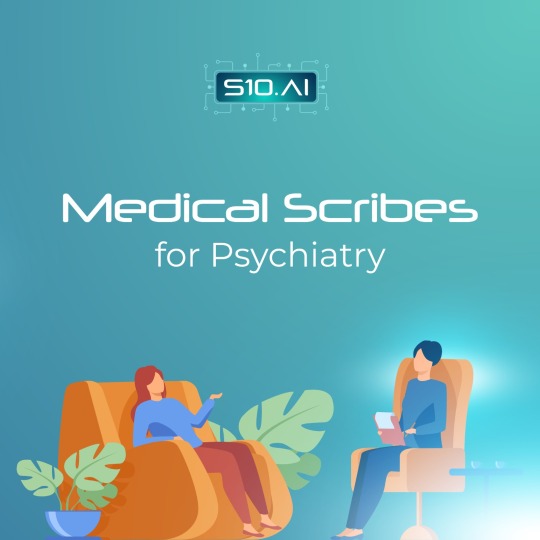
Feeling Overwhelmed by Documentation? Psychiatrists, the backbone of mental health care, often face a hidden enemy: administrative burden. Between patient sessions, mountains of paperwork can steal valuable time meant for what truly matters - connecting with patients. This blog post explores how medical scribes and innovative solutions like S10.AI can empower you to reclaim your focus and elevate patient care.
https://s10.ai/blog/medical-scribe-for-pyschiatry
#psychscribe#psychMD#mentalhealthscribe#psychiatricscribe#psychnotes#medicaldocumentation#mentalhealthdocumentation#S10AI#EHR#S10
1 note
·
View note
Text
Mastering AAC-3 NABH 6th Ed | Healthcare Excellence | Jerald Nepoleon
Author : Jerald Napoleon | Founder and CEO, Grapes Innovative Solutions
Introduction
In the dynamic landscape of modern healthcare, ensuring seamless patient care across different facilities and departments has become paramount. The National Accreditation Board for Hospitals & Healthcare Providers (NABH) 6th Edition introduces stringent standards for patient transfer and referral mechanisms through the AAC-3 standard. This comprehensive guide explores the intricacies of AAC-3 and its four critical commitments that healthcare organizations must master to achieve accreditation excellence.
Understanding AAC-3: The Foundation of Safe Patient Transitions
AAC-3 represents a cornerstone standard in NABH accreditation, focusing on establishing appropriate mechanisms for patient transfer and referral. This standard ensures that healthcare organizations maintain continuity of care while safeguarding patient safety during transitions between facilities or departments.
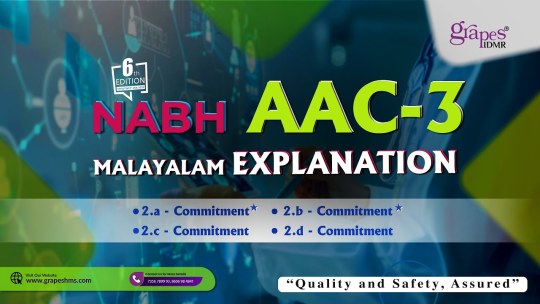
The significance of AAC-3 cannot be overstated in today’s interconnected healthcare ecosystem. With patients often requiring specialized care across multiple facilities, the ability to execute seamless transfers and referrals directly impacts patient outcomes and organizational reputation.
AAC-3a: Mastering Transfer-In Protocols
The first commitment under AAC-3 addresses the critical process of receiving patients from external facilities. AAC-3a mandates that healthcare organizations establish robust protocols for patient transfer-in procedures, ensuring that incoming patients receive appropriate care from the moment they arrive.
youtube
Effective transfer-in protocols require comprehensive pre-arrival communication systems, dedicated reception areas, and trained staff capable of quickly assessing and triaging incoming patients. Organizations must develop standardized procedures for reviewing patient documentation, verifying medical histories, and conducting initial assessments.
Key elements of successful AAC-3a implementation include establishing clear communication channels with referring facilities, creating detailed checklists for staff handling incoming transfers, and implementing technology solutions that facilitate rapid information sharing. Healthcare organizations must also ensure that their emergency departments and specialized units are adequately equipped to handle various types of incoming transfers.
AAC-3b: Optimizing Transfer-Out and Referral Processes
The second commitment focuses on the outbound journey of patients requiring care at other facilities. AAC-3b emphasizes the importance of appropriate transfer-out and referral procedures, ensuring that patients are directed to facilities best equipped to meet their specific medical needs.
Successful implementation of AAC-3b requires healthcare organizations to maintain updated databases of available services at partner facilities, establish clear criteria for transfer decisions, and develop standardized referral protocols. Organizations must also ensure that staff understand when and how to initiate transfers, including the documentation required and the communication protocols to follow.
The transfer-out process must be carefully orchestrated to minimize delays and ensure patient safety. This includes coordinating with receiving facilities, arranging appropriate transportation, and preparing comprehensive patient documentation. Healthcare organizations must also establish feedback mechanisms to monitor the success of their referral processes and continuously improve their procedures.
AAC-3c: Ensuring Appropriate Accompanying Staff
The third commitment addresses a critical aspect often overlooked in patient transfers: the qualification and appropriateness of accompanying staff. AAC-3c requires that healthcare organizations carefully select staff members who accompany patients during transfers, ensuring their skills and expertise match the patient’s clinical condition.
This commitment recognizes that patient conditions can change rapidly during transport, requiring accompanying staff to possess the necessary skills to manage emergencies and provide appropriate interventions. Organizations must develop clear guidelines for staff selection, considering factors such as the patient’s diagnosis, stability, required interventions, and transportation duration.
Implementing AAC-3c effectively requires ongoing staff training programs, competency assessments, and clear protocols for different types of transfers. Healthcare organizations must also ensure that accompanying staff have access to necessary equipment and medications, and that they understand their responsibilities during the transfer process.
AAC-3d: Comprehensive Patient Summary Documentation
The fourth and final commitment under AAC-3 focuses on documentation and communication. AAC-3d requires healthcare organizations to provide comprehensive summaries of patient conditions and treatments given, ensuring continuity of care and facilitating informed decision-making at receiving facilities.
Effective patient summaries must include detailed medical histories, current diagnoses, treatments provided, medications administered, and any relevant clinical observations. This documentation serves as a crucial communication tool between healthcare providers and significantly impacts patient safety and treatment effectiveness.
Organizations must develop standardized templates for patient summaries, ensuring consistency and completeness across all transfers. Staff training programs should emphasize the importance of accurate and timely documentation, and organizations should implement quality assurance measures to verify the completeness and accuracy of patient summaries.
Implementation Strategies for AAC-3 Compliance
Successfully implementing AAC-3 requires a systematic approach that addresses organizational culture, staff training, technology integration, and continuous quality improvement. Healthcare organizations must begin by conducting comprehensive assessments of their current transfer and referral processes, identifying gaps and areas for improvement.
Leadership commitment is essential for successful AAC-3 implementation. Organizations must allocate sufficient resources, establish clear accountability structures, and create cultures that prioritize patient safety and quality care. Regular training programs and competency assessments ensure that staff understand their roles and responsibilities in the transfer process.
Technology plays a crucial role in modern AAC-3 implementation. Electronic health record systems, communication platforms, and mobile applications can significantly improve the efficiency and accuracy of transfer processes. Organizations should invest in technology solutions that facilitate real-time communication, streamline documentation, and provide decision support tools for staff.
Measuring Success and Continuous Improvement
Implementing AAC-3 is not a one-time effort but requires ongoing monitoring, evaluation, and improvement. Healthcare organizations must establish key performance indicators (KPIs) to measure the effectiveness of their transfer and referral processes, including metrics such as transfer times, documentation completeness, patient satisfaction, and adverse events.
Regular audits and reviews help identify areas for improvement and ensure ongoing compliance with AAC-3 requirements. Organizations should also establish feedback mechanisms with partner facilities to gather insights about the quality of their transfers and referrals.
Conclusion
AAC-3 represents a fundamental standard for healthcare organizations seeking NABH accreditation and excellence in patient care. By mastering the four commitments outlined in this standard, healthcare organizations can ensure safe, effective, and efficient patient transfers and referrals.
The journey toward AAC-3 compliance requires dedication, resources, and ongoing commitment to quality improvement. However, the benefits extend far beyond accreditation, contributing to improved patient outcomes, enhanced reputation, and operational excellence.
As healthcare continues to evolve, the principles embedded in AAC-3 will remain essential for delivering high-quality, patient-centred care across the healthcare continuum.
For More Checkout Our YouTube Channel : Grapes HMS
Frequently Asked Questions
What is the primary purpose of AAC-3 in NABH accreditation?
AAC-3 ensures that healthcare organizations have appropriate mechanisms for patient transfer and referral, maintaining continuity of care and patient safety during transitions between facilities or departments.
2. How does AAC-3a differ from AAC-3b in terms of implementation?
AAC-3a focuses on receiving patients from external facilities (transfer-in), while AAC-3b addresses sending patients to other facilities (transfer-out/referral). Both require different protocols and procedures.
3. What qualifications should accompanying staff have under AAC-3c?
Accompanying staff should have clinical skills appropriate to the patient’s condition, including the ability to monitor vital signs, administer medications, and manage emergencies that may arise during transport.
4. What information should be included in patient summaries as per AAC-3d?
Patient summaries should include medical history, current diagnoses, treatments provided, medications administered, vital signs, and any relevant clinical observations or special instructions.
5. How can healthcare organizations measure compliance with AAC-3 standards?
Organizations can measure compliance through KPIs such as transfer times, documentation completeness, patient satisfaction scores, adverse events during transfers, and feedback from receiving facilities.
#JeraldNepoleon#NABH6thEdition#AAC3#NABH#PatientTransfer#HealthcareAccreditation#PatientSafety#QualityHealthcare#MedicalReferral#HealthcareStandards#PatientCare#HospitalAccreditation#HealthcareManagement#ClinicalExcellence#PatientTransition#MedicalDocumentation#HealthcareQuality#HospitalManagement#PatientReferral#MedicalTransfer#HealthcareCompliance#QualityImprovement#PatientSummary#ClinicalCare#HealthcareProfessionals#MedicalStandards#PatientOutcomes#HealthcareOperations#ClinicalDocumentation#MedicalContinuity
0 notes
Text
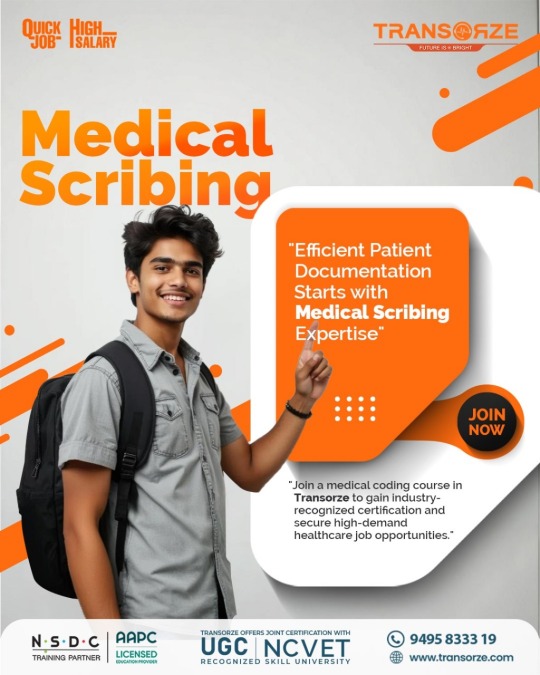
Learn best with the Medical Scribing course at Transorze, where language and healthcare meet technology. This program trains you to become a skilled real-time documentation expert for physicians. With hands-on practice and personalized guidance, you'll gain confidence and career-ready skills. Transorze helps you build a strong foundation for a future in modern healthcare communication.
#MedicalScribing#LearnBest#Transorze#HealthcareCareer#ScribingCourse#MedicalDocumentation#HealthTech#TransorzeTraining#HospitalJobs#MedicalScribeIndia
0 notes
Text
📝 RHIT Test Prep Question of the Day
Topic: Health Record Types
Q: Which of the following is a key characteristic of the problem-oriented health record?
A. Allows all providers to document in the health record B. Uses laboratory reports and other diagnostic tools to determine health problems C. Provides electronic documentation in the health record D. Uses an itemized list of the patient's past and present health problems

✅ Correct Answer: D. Uses an itemized list of the patient's past and present health problems
💡 Explanation:
The Problem-Oriented Health Record (POHR) organizes patient information around a problem list—a detailed, itemized account of all past and current health issues. This format helps healthcare teams track and manage patient care effectively. It also includes components like the database, plan of care, and progress notes, usually following the SOAP (Subjective, Objective, Assessment, Plan) note format.
#RHIT#RHITprep#HealthInformationManagement#HIM#ProblemOrientedHealthRecord#MedicalRecords#Studyblr#AcornHIM#AHIMA#MedicalDocumentation
0 notes
Text
Quick Learning, Big Rewards in Medical Scribing!

Minimal study, maximum opportunity – that's the promise of a career in Medical Scribing! Join a booming industry that offers immense growth potential and pays off fast. With Transorze Solutions, gain the essential skills for medical documentation and help healthcare professionals in an in-demand role.
#MedicalScribing#MinimalStudyMaximumOpportunity#TransorzeSolutions#BoomingIndustry#CareerGrowth#MedicalDocumentation#HighDemandJobs#HealthcareCareers#SkillDevelopment#FastPayout#FutureReady#RewardingCareer#HealthcareProfessionals#JobReadySkills#NSDCCertified#UGCRecognized#NCVETApproved#InDemandRoles#SecureYourFuture#EnrollNow
0 notes
Text
🖋️ Enroll in Transorze Solutions' Medical Transcription Course to get started in healthcare documentation!
Learn how to turn medical dictations into precise, thorough documentation. Skilled workers are always in demand because the healthcare sector depends so heavily on precise transcribing for patient care and billing.
Transorze Solutions: Why Choose It?
Comprehensive instruction in medical terminology and transcription techniques Practical experience using the newest software and tools for transcription Internationally recognized qualification to improve your chances of landing a job
Today, start down the path to a rewarding career in medical transcribing! 🌍
#MedicalTranscription#TransorzeSolutions#HealthcareCareers#TranscriptionTraining#CareerInHealthcare#MedicalDocumentation#FutureReady
0 notes
Text

NOTES: Medical Rounds Journal: Heart and Flowers Notepad Log Book for Health Care Clinicians, Medical Students, Nurses and Assistants Paperback – Feb. 20 2022
by HCLove Press (Author)
NOTES: MEDICAL ROUNDS JOURNAL : Heart and Flowers Notepad Log Book for Health Care Clinicians, Medical Students, Nurses and Assistants We love our heath care heroes. They are the backbone of every healthy and struggling clients in every health care facility. We wanted to produce a simple, personalized journal for rounds as they always need to have a small, trusty notebook inside their coat pocket or lab gowns. Here are the features:
SIZE. 6 x 9 inches in size - a relatively small and compact notebook
EXTERIOR. Beautiful aesthetic heart and flowers cover, glossy paperback
INTERIOR. 120 pages with templates for each patient: Personal Information, Health History, Diagnosis, and more. See 'Look Inside' feature; Premium color, white pages
USES. Suitable as gift for every healthcare professional or student you know and love. We guarantee you that they can always need one more.
Thank you for your patronage. We love to hear what you think. Please review the product so that we can improve our future projects.
#medicalrounds#employeejournal#logbook#healthcareprofessionals#patientcare#medicalstaff#hospitalwork#nursinglife#doctorsofinstagram#healthcareteam#medicalrecords#worklifebalance#healthcareindustry#medicaldocumentation#clinicalnotes#healthcareadministration#medicaloffice#healthcareworkers#medicalprofessionals#healthcaremanagement
0 notes